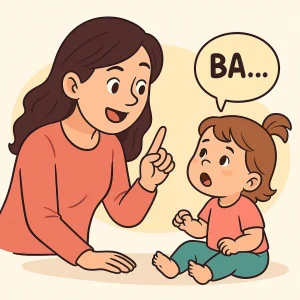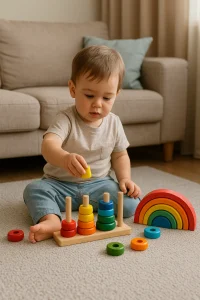How to Improve Memory in Studies? | How to Memorize Well?
By Prapoorna M
Last Updated: November 26, 2021
Most of the students work hard and study well, but some of them have poor memory and forget soon, due to which their scores get reduced. After having shared some study skills on how to improve your attention and concentration, here are numerous techniques and study skills for the students to excel in their studies and improve their grades.
Self-monitoring
Self-monitoring is necessary to reassess your study. Even though you’ve learned the material, you need to ask yourself: Have I really learned it? Have I really given it sufficient time, focus and attention? Have I sufficiently revisited it? Do I have it consolidated in my mind? Have I mastered it? Have I programmed it in my long-term memory?
Improving memory
The common complaint by people is that their memory power is decreasing or not up to the mark. This is more common among students. It is true that good memory power is essential for success, but in reality the feeling that their memory is deteriorating is wrong. The fact is that the memory of a person does not decrease by itself, unless it is disturbed by shocks of some kind. The decrease may also take place either due to the disease or damage to the nerve cells of the cortex.
If the individual is healthy both physically and psychologically, the chance of deterioration in the memory is a rare possibility. Complexity of the material learnt, emotional disturbances, lack of concentration and such other causes may affect our learning and in turn our memory, and cause forgetting. To improve one’s memory one has to learn better, so that his or her retention will improve and consequently remembering will improve. Memory strategies will help you remember what you really need to remember, when you need to remember. These strategies will teach you how to memorize and recall important information.

Here is a list of certain principles explaining the ways of improving
memory.
Mnemonics
Using Mnemonics is a famous method of improving memory. Arranging the first alphabets of a list of things to remember, in an order to remember is called mnemonics.
Method of loci
The Method of loci, a technique for memorizing practiced since ancient period which is a type of mnemonic link system based on places (loci, otherwise known as locations). It is often used where long lists of items need to be memorized. The technique was taught for many centuries as a part of the curriculum in schools, enabling a speaker to easily remember a speech or students to easily remember many things at will. If we are able to evoke more detailed clear and real images of objects and events which we want to recall then the recall would be much better.
Make a mental tour of an imagined place and then remember the item as if they are kept there. The ability to create images of the material you want to remember helps you to improve memory. It involves linking points you want to remember with visual images arranged in some familiar order. Easy, isn’t it?
For example:
Select any location that you have spent a lot of time in and know very well. Now, imagine yourself walking through that location, selecting clearly defined places like door, sofa, table, chair, refrigerator, shelf, etc. Imagine yourself putting objects (points that you need to remember) into each of these places by walking through this location.
In order to retrieve, you need a standard direct path and clearly defined locations for those objects. You can visualize a large association with a habitat of rooms that furnishes with familiar objects. Then attach the items or thoughts that you wish to recall the objects. As you walk mentally through the order, they act as prompts. If you want to remember the points in a presentation you can imagine walking through some familiar place, say your home. Then imagine a series of things in which each item you wish to
remember is placed in a specific location.
Example:
Let’s say you need to remember the greenhouse effect. Consider it is real. For this, you can imagine a large steamy greenhouse right outside your front door. The next point might be cutting down the rainforest is increasing the greenhouse effect. For this one, you might imagine a large tree in your living room. You would form other images in different locations for the other points you want to make. Then, by taking an imaginary walk through your house you can see each of these images and so remember the points in your presentation. Good for kinesthetic learners.
Number and letter peg system
A technique for memorizing lists. It works by pre-memorizing a list of words that are easy to associate with the numbers they represent (1 to 10, 1-100, 1-1000, etc.). Those objects form the “pegs” of the system. Then in the future, to rapidly memorize a list of random objects, each one is associated with the appropriate peg. Such a peg list generally has to be memorized one time. It can then be used over and over whenever a list of items needs to be memorized.
As mentioned earlier, the peg lists are generated from words that are easy to associate with the numbers (or letters). Especially, the Peg lists created from letters of the alphabet or rhymes are very simple to learn and remember, but they are produced in a limited number.
The main idea of these systems is to establish in our long-term memory a well-organized set of images to which the to-be-remembered items can be linked. For instance, a rhyming system can be used to remember numbers from 1to ten.
Memorizing using rhyme-keys
Firstly, memorize key words that can be easily associated with the numbers. Example: bun = one; shoe = two, tree = three, door = four, hive = five, etc.
Create an image of the items you need to remember with key words. Four basic food groups– dairy products; meat, fish, and poultry; grains; and fruit and vegetables. Think of cheese on a bun (one), livestock with shoes on (two), A sack of grain put off from a tree (three), a door to a room kept with fruits and vegetables (four). The object to rhyme-keys is to build associations using the images in mind with numbers and key rhyming words. This image in turn helps you remember the target word which takes practice, and the trick is to not remember the rhyme but the association.
Stories you tell your self
In case if you have to remember a list of unrelated items, in a made up story, the story starts with the first item on the list and in order; each succeeding item is worked up. Doing this gives unity and meaning to unrelated items.
Rhyme Mnemonics
Rhyme Mnemonic puts information in the form of a poem, to rhyme
with the words.
Example: A commonly used Rhyme Mnemonic for the number of days in each month is: 30 days hath September, April, June, and November. All the rest have 31. Except February my dear son, It has 28 and that is fine. But in Leap Year it has 29.
Connection Mnemonics
As the name implies, the information to be remembered is connected
to something that is already known.
Example: In order to remember the words latitude and longitude, realizing that the lines on a globe that run north and south are long makes you remember longitude, where the alphabet N is the present in the words north and longitude too. Otherwise, they are the latitudes that run east and west and have no N in them.
Another Connection Mnemonic is related to sound. The 1st part of the word latitude sounds like flat and flat runs horizontal or East and West.
Chunking
Chunk is a block or a group of something. Categorizing the information that needs to be memorized into small chunks is another useful way to improve memorization. For example, if a person has to memorize a long sequence of numbers, he can break the sequence into chunks of three. This allows him to remember more of the numbers. Similarly, this is how we often memorize telephone numbers, by breaking them up into the three sections: an area code, followed by a three-digit number and then a four-digit number. Chunking can also used to memorize the words. A list of words to be memorized, could be broken up into groups based on their starting letter or based on their category (ex: Months of the year, types of food,) etc.
Click here to learn about smart reading techniques, helpful for students.
Create acrostic
An acrostic is sentences made up of words whose initial letters are memory cues. For example, biology classifies living organisms according to their place in the following categories: Kingdom Phylum-Class-Order-Family-Genus-Species. Many students have memorized this sequence using the sentence, “King Phillip Came over from Germany Swimming.”
The first eighteen elements of the Periodic Table
Happy Henry Likes Butter But Could Not Obtain Four Nuts
That gives us the first 10: Hydrogen, Helium, Lithium, Beryllium, Boron, Carbon, Nitrogen, Oxygen, Fluorine, and Neon.
Naughty Magpies Always Sing Perfect Songs Clawing Ants
That gives us the next 8: Sodium (Na), Magnesium, Aluminum, Silicon, Phosphorous, Sulphur, Chlorine, and Argon
PEMDAS, sequence in solving or evaluating math equations
Parenthesis | Exponents | Multiplication | Division | Addition | Subtraction
IPMAT, the stages of cell division
Interphase, Prophase, Metaphase, Anaphase, Telephase
Over-learning
Over learning means learning a task beyond the point at which it has just been mastered. Degree of over learning is usually expressed as percentage. If it takes five trials to learn a list of words and a person practices for five trials more, this is 100 per cent over-learning while ten extra trials is 200 per cent over learning etc. 100 per cent over-learning is much better as compared to simple learning. More over learning, beyond 100 percent is not much useful and is a waste of time. Over learning is more advantageous after 14 or 28 days.
Self-recitation during practice
While practicing, try to recite the material to yourself. This increases your memory

PQRST method:
This method is used to remember the study material. When we want to study a book or a chapter in a book and want to remember it, we use this method. This method takes its name from the first letters of its five stages.
These are preview, questions, read, self-recitation and test.
Preview
First go through the chapter to know what are the various sections, topics and sub-topics present in it. Now divide each sub topic into various points.
Question
Frame questions on each topic or sub-topic
Read
Read the entire chapter with the intention of answering the questions which you have framed
Self-recitation
Recall the answer that you have prepared and read
Test
Give a written test to yourself to test your knowledge. Give yourself extra retrieval cues
Use this principle to provide yourself with extra retrieval cues to enhance your memory. If you studied for a test while in one physical state, try to be in the same state when you take the test.
Use the principle of mood-dependent memory
If you learned some material while in a given mood and then want to remember it, try to put yourself in the same mood. You can often vary your own mood by imagining happy or sad events. To the degree that your mood matches the mood you were in when you learned some information, your memory for the information may be improved.
Develop your own short hand codes
When you learn the name of the planets, use the first-letter technique, in which the first letter of each word in a phrase stands for an item to be remembered. In this case use the phrase “Mary’s Violet Eyes Make John Stay up Nights Pondering” (for mercury, Venus, earth, mars, Jupiter, Saturn, Uranus, Neptune, and Pluto) or My Very Easy Method Just Speeds Up Naming Planets. This can be very useful technique if you need to remember any lists of items.
Other Tips for improving memory
Really think about what you want to remember. It is important to think about the information, if you wish to enter it into long-term memory. Understand the concept, imagine, consider its meaning, ask questions about it and examine its relationship to information you already know. Elaboration will help make the new information part of your existing knowledge frame works and will increase your chances of remembering it later. Always pay high attention to what you want to remember. Unless you consciously notice information you want to remember it stands little chance of getting in, into long-term memory. Be sure to direct your attention to information you want to remember. It involves a bit of work, but in the long run, it will save time and effort.
Reducing forgetting
There are indeed a number of methods suggested for reducing forgetting, which improves the memory.
Minimize interference
Interference is a major cause of forgetting. The more similar materials are the more likely they are to produce interference. You should arrange your studying so that you don’t study similar subjects, in a day. They should be unrelated. The result will be less interference between them and, possibly better grades.
Engage in distributed learning/practice
Memorizing should be in bits and never try to cram all the information you want to memorize into long term storage at once. It’s better to present information with repeated intervals. Space your studying over several sessions, preferably several days. This is especially important if you want to retain the information for a long period of time rather than just until the next exam.
Use visual imagery and other mnemonics
A picture is worth a thousand words. It is often easier to remember information associated with clear mental image. You can put this principle to use by mnemonics.
Over learning
After you know the material also, keep learning to prevent forgetting. Put in another 20 percent of the time to master the material.
Testing frequently
Test frequently, it helps remember material.
Memory to improve memory
The act of retrieval helps you remember the things you recall. When information is successfully retrieved from memory, its representation in memory is changed such that it becomes more recallable in the future. If you still feel like you need help in memorizing and improving your scores, or if you need to have some career counselling, please feel free to approach our psychological consultants, who can help you with some advanced techniques. Book an appointment today.
FAQs for Improving Memory and Study Skills
1. Why do some students struggle with poor memory when studying?
- Poor memory during studying can be attributed to various factors, including emotional disturbances, lack of concentration, complex material, or ineffective learning strategies.
2. Is memory decline a natural part of aging?
- Memory decline is not necessarily a natural part of aging. Memory abilities can be maintained and improved with proper techniques and strategies, regardless of age.
3. How can students improve their memory power?
- Students can enhance their memory power by adopting effective memory strategies, such as mnemonics, the method of loci, and others mentioned in the script. Additionally, maintaining physical and psychological health can contribute to better memory.
4. What are mnemonics, and how do they help improve memory?
- Mnemonics are memory aids that involve using associations, acronyms, or other techniques to remember information. They help improve memory by providing mental cues that make it easier to recall facts, lists, or concepts.
5. What is the “Method of Loci,” and how does it work to enhance memory?
- The Method of Loci is a mnemonic technique that involves associating information with specific places or locations in a familiar environment. This method helps improve memory by creating a mental map of these locations and linking information to them.
6. How can students use visualization to improve memory?
- Visualization involves creating vivid mental images of the information you want to remember. By associating information with clear and memorable mental images, you can improve your ability to recall it later.
7. What is the Number and Letter Peg System, and how does it help with memory?
- The Number and Letter Peg System is a memory technique that involves associating numbers or letters with specific words or objects that are easy to remember. This system helps you quickly memorize lists or sequences by using pre-memorized pegs.
8. How can students benefit from creating acrostics to improve memory?
- Acrostics involve creating sentences or phrases where the initial letters of the words represent the items you want to remember. Using acrostics can help you recall information more easily by providing a memorable and organized structure.
9. What role does over-learning play in improving memory?
- Over-learning involves continuing to practice and review material even after it has been mastered. It can help reinforce memory and improve long-term retention.
10. How does the PQRST method help in memorizing study material?
- The PQRST method (Preview, Question, Read, Self-recitation, and Test) is a systematic approach to studying and remembering information. It encourages active engagement with the material through previewing, questioning, reading, self-recitation, and self-testing.
11. What are some additional memory-enhancing tips mentioned in the script?
- Additional tips include using mood-dependent memory, developing shorthand codes, paying attention to what you want to remember, minimizing interference, engaging in distributed learning, and frequent testing.
12. Can memory decline be prevented with proper techniques?
- Memory decline can often be prevented or mitigated by using effective memory-enhancing techniques and strategies, maintaining a healthy lifestyle, and practicing memory-boosting activities.
13. What should students do if they need further assistance with memory improvement or career counseling?
- Students seeking help with memory improvement or career counseling can approach psychological consultants who specialize in these areas. Booking an appointment with these professionals can provide personalized guidance and advanced techniques for improvement.
About the Author:
Prapoorna Mangalampalli, Psychologist
Prapoorna, an author with dual master’s degrees in Psychology and English, excels in exploring and enhancing human experiences. Her writing, characterized by deep empathy and insight, primarily focuses on the complexities of counseling, spanning areas such as online, marital, relationship, child, family, and career counseling. Specialized training in various counseling sectors underscores her dedication to positive change. In her blogs, Prapoorna offers valuable guidance and a unique perspective for parents of children with Autism and special needs, creating a supportive community in this realm.
Book your Free Consultation Today
Parent/Caregiver Info:
Client’s Details:
* Error Message








